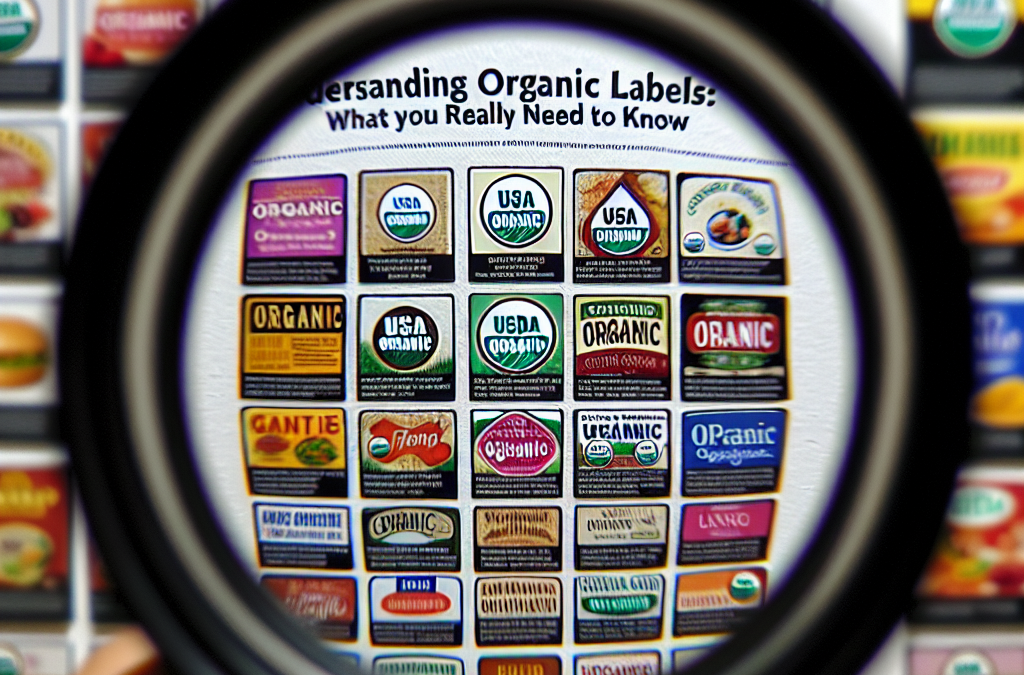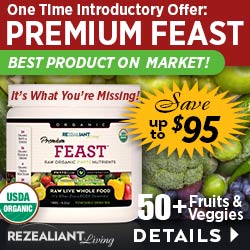1. The Basics of Organic Certification
What Does Organic Mean?
When I first started exploring organic foods, I was puzzled by the term “organic.” It’s one of those buzzwords that gets thrown around a lot, but what does it actually mean? In simple terms, organic refers to food that has been produced without the use of synthetic pesticides, fertilizers, or genetically modified organisms (GMOs). It’s all about going back to the basics and ensuring that the food is grown naturally.
Understanding the meaning of organic is crucial if you want to make informed choices at the grocery store. It reflects a commitment to not just personal health but also the health of our planet. The more we know, the more empowered we feel when making choices that contribute to a sustainable lifestyle.
In the U.S., the USDA (United States Department of Agriculture) is the main body that governs the certification process. They have specific guidelines that farmers must meet to call their products organic, which I think is pretty reassuring for consumers.
Types of Organic Labels
As I delved more into organic foods, I discovered there are different types of organic labels, each signifying varying levels of organic content. For instance, there’s “100% Organic,” which means the product contains only organic ingredients. Then there’s “Organic,” which typically means at least 95% of the ingredients are organic. Understanding these distinctions helps you know what you’re getting.
Then, you have “Made with Organic Ingredients.” This label indicates that at least 70% of the ingredients are organic. This one is a bit tricky because, while you’re getting some organic goodness, it’s not entirely organic. So, I always read labels carefully!
Lastly, if a product has less than 70% organic ingredients, it can’t display the USDA organic seal but can still say “organic” on the ingredients list. This is why being aware of the labels can greatly influence your purchasing decisions.
The Certification Process
The certification process for organic products can be quite meticulous. It involves extensive record-keeping and adherence to strict guidelines, which can be time-consuming for farmers. I’ve learned that to become certified, a farm must undergo a three-year transition period, during which they can’t use prohibited substances. That’s a big commitment!
Once the transition period is complete, the farm is subject to rigorous inspections and reviews by certification bodies. This is to ensure they maintain the standards necessary to carry the organic label. Knowing this made me appreciate the efforts behind my organic veggies a whole lot more!
It’s also worth mentioning that not all organic operations are the same. Some farms are small-scale and family-run, while others might be larger and more commercial. Both can be certified organic, but I tend to lean towards supporting smaller, local farms whenever possible.
2. The Benefits of Choosing Organic
Health Benefits
One of the primary reasons I started buying organic was for my health. Numerous studies suggest that organic food contains fewer pesticides, which is a huge plus for me and my family. We eat a lot of fruits and vegetables, so I want to ensure we’re fueling our bodies in the best way possible.
Additionally, organic products often have higher levels of omega-3 fatty acids and antioxidants, which are essential for good health. For me, it’s all about making choices that have a positive impact on long-term health.
Although organic foods often come at a higher price point, I’ve found that the health benefits can outweigh the cost. It’s an investment in our well-being, and it’s worth every penny to me.
Environmental Impact
Choosing organic isn’t just beneficial for our health; it’s also a vote for healthier ecosystems. Organic farming practices are designed to reduce pollution and conserve water, which made me feel like I was making a more responsible choice for the environment.
By avoiding synthetic fertilizers and pesticides, organic farmers help to maintain biodiversity and promote healthier soil, reducing the impact of chemical runoff on our waterways. This aspect really struck a chord with me as I think about the legacy we leave for future generations.
Plus, supporting organic farming helps local economies thrive. Many organic farms are small operations, and buying from them contributes directly to my community. It’s all interconnected, and knowing that makes me feel good about my shopping choices.
Support for Animal Welfare
As someone who cares deeply about animal welfare, I appreciate that organic standards include ethical treatment of livestock. Organic meat and dairy are produced under strict guidelines that mandate access to outdoor spaces and are free from antibiotics and growth hormones.
This focus on animal welfare not only creates healthier products but also ensures that animals are treated humanely. For me, knowing that the animals involved in my food supply have had a decent quality of life is very important.
So, when I enjoy a meal containing organic meat, I can appreciate it not just for its taste but also knowing I’ve made a choice that reflects my values.
3. Common Misconceptions About Organic Foods
Organic Equals Pesticide-Free
A common misconception I’ve encountered is that organic means it’s completely pesticide-free. While organic products do use natural pesticides, it’s not accurate to say they’re entirely free of pesticides. Natural doesn’t equate to better or safer. Organic farming uses these natural solutions to manage pests while adhering to guidelines.
This doesn’t mean that organic produce is inferior—it just reflects a different approach. Learning this helped me better understand the complexities of organic farming and really appreciate the standards in place.
In the end, it’s all about balance. Knowing that organic farms use natural methods still gives me peace of mind over conventional farming practices that rely heavily on synthetic chemicals.
Get an Amazing Discount on the Best Certified Organic Whole Food Supplement!
Organic is Always Healthier
Another myth is that organic foods are always healthier than their conventional counterparts. While it’s true that organic foods often have fewer pesticides, they’re not necessarily higher in all nutrients. Sometimes, conventional produce can pack just as much punch.
This doesn’t diminish my enthusiasm for organic; it just means I need to continue exploring different options and understanding that health isn’t solely about organic versus non-organic.
I’ve realized that the best path is to consume a variety of fruits and vegetables, mix in some local produce, and combine organic with conventional options when needed. Flexibility is key!
All Organic Products Are the Same
Not all organic brands and products are created equal! Some may use better practices than others, and it’s essential to do a little bit of research. I’ve learned to look beyond the label at company values and production methods.
For example, a small farm may have an excellent reputation and genuinely sustainable practices, while a larger company may have a more commercial approach to organic certification.
By being aware of these differences, I can make more conscious choices, supporting brands that genuinely prioritize sustainability and ethical practices in their operations.
4. How to Read Organic Labels Effectively
Understanding the Labeling Terms
Getting the hang of organic labels can initially feel overwhelming, but it’s a skill worth developing! Now, I don’t just glance at the packaging—I take the time to understand what each term means. It starts with the organic seal itself, which is an indication of certification by the USDA.
Next, I pay attention to the ingredients list to ensure that those terms align with the joy of being organic versus conventional. It’s fascinating to see how different products stack up side by side just based on their ingredients.
This deeper understanding allows me to make choices that align with my values, whether that’s supporting smaller farms or seeking out products that go above and beyond in their organic certification.
Identifying Hidden Ingredients
Reading labels isn’t only about what’s organic; it’s also crucial to identify any hidden ingredients that may not align with organic ideals. Some products might seem organic at first glance but can include unnecessary additives that don’t contribute to a healthy diet.
I personally look for products with minimal and recognizable ingredients. If I can’t pronounce it, I’ll probably steer clear! This simple practice has drastically improved the quality of the food in my pantry.
Each time I shop, I remind myself that being informed is empowering. A little diligence can go a long way in making sure I’m choosing only the best for myself and my family.
Making Smart Choices
When I’m at the store, I try to balance my choices based on price, availability, and personal values. I’ve come to appreciate local farmers’ markets as an excellent alternative—a chance to support my community while often finding fresh, organic options!
Being savvy about shopping doesn’t just keep my pantry stocked with great foods; it also ensures I’m purchasing items that foster sustainability. It all boils down to making informed decisions that feel right for me.
Every shopping trip is an opportunity to practice my newfound skills in reading labels, making smart choices, and enjoying the benefits of organic offerings!
5. Frequently Asked Questions
1. Are organic foods really worth the price?
For me, they definitely are! While they can be more expensive, the benefits to health, the environment, and animal welfare make them a smart investment. Plus, shopping at local markets can sometimes help lower those costs.
2. What are the differences between organic and non-organic foods?
The main differences lie in how the crops are grown, the use of chemicals, and animal welfare practices. Organic means no synthetic pesticides and fertilizers, while non-organic may use these methods. Understanding this difference has helped me make better choices.
3. Can I trust organic labels?
Yes, especially if they carry the USDA organic seal! This certification involves strict guidelines and regular inspections. However, it’s also beneficial to research brands to understand their practices better.
4. How can I incorporate more organic foods into my diet?
Start gradually! Maybe pick a few staples like fruits and veggies. Explore local farms and farmers’ markets in your area—they often have fresher, organic options at competitive prices!
5. Is all organic produce the same?
No, and that’s an important lesson I’ve learned. Different brands and farms have different standards. Always look for specifics about where and how the food is sourced. This way, you can support farms that match your values.




